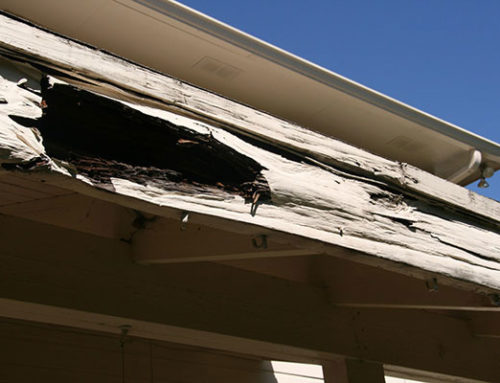Biowalls — also referred to as living walls, vertical gardens, green facades, and green walls — are interior or exterior walls that are covered with living vegetation. Biowalls have practical applications for both indoor and outdoor use. Many indoor biowalls are implemented in homes and offices for their natural air-filtration properties, 
Facts and Figures
- The EPA estimates that even in buildings employing state-of-the-art HVAC systems, indoor air quality can be significantly worse than outdoor air quality due to the emission of volatile organic compounds (or VOCs). VOCs result from the off-gassing of paint, refrigerants, new carpeting, glues, electronics, and other petrochemical products. VOCs may not be hazardous in small quantities but, over time, they contribute to Sick Building Syndrome (SBS), which causes occupants of affected buildings to suffer headaches, dizziness, and irritation of the eyes, nose and throat.
- In a 1984 study, NASA found that vegetation sequesters and purifies a significant amount of VOCs from enclosed indoor spaces.
- Plant foliage is responsible for turning carbon dioxide into oxygen, but it is the root system that actually sequesters hazardous VOCs.
How do biowalls function?
There are two main types biowalls:
- In panel systems, soil packed in plastic bags oftentimes comprises the growing medium. Plants and soil are placed in compartments and connected to a support and irrigation system.
- In felt systems, panels of felt are used as the growth medium that the plants fit into. The felt sits against a waterproof layer, which is mounted onto a support structure. Roots grow downward and hold the plants in place.
A drip-irrigation system may be installed to run across the top of the biowall, allowing water and added nutrients to cascade down and soak the growth medium and plant roots. Excess water that pools at the bottom then recirculates back to the top of the wall by means of a pump. Some systems utilize captured rainwater or recycled greywater to minimize the water requirements of a biowall.
There are two main classifications that distinguish biofiltration intensity:
- passive biowalls filter air naturally, as plant foliage absorbs carbon dioxide and emits fresh oxygen; and
- active biowalls are indoor systems that take this process a step further. Fans draw polluted air through the biowall’s growing medium. The plants’ roots trap harmful VOCs, which microbes may use as a source of energy. The building’s HVAC system then circulates newly filtered air throughout indoor areas.
Advantages of Biowalls
- Active biowalls perform natural biofiltration and decrease the incidence of SBS.
- Active biowalls reduce the need for indoor heating and cooling, which saves energy and money. Traditional HVAC systems replace indoor air with outdoor air on an hourly basis. This necessitates additional heating or cooling of new air to meet the desired temperature of indoor air. Active biowalls recirculate the same air, thus eliminating the need for further heating or cooling.
- Active biowalls may remediate hazardous pollutants that some mechanical filtering systems cannot.
- Vegetation on a building’s exterior walls minimizes direct sunlight on the surface of the building. In this way, the biowall minimizes the summertime UHI effect in cities, as less heat is re-radiated. This shading effect also translates into a reduced need for air conditioning in summer or in warm climates.
- Vegetation on exterior walls protects buildings from harmful acid rain and UV rays. It also protects building materials from excessive expansion and contraction, as it minimizes temperature fluctuations.
- Outdoor biowalls provide insulation to buildings, which reduces the energy required for indoor heating and cooling, and saves money. This is particularly noticeable in temperate climates, where buildings lack hardy insulation.
- Biowalls can tolerate non-potable water, and may even have the capacity to purify polluted water.
- Water moving through vegetation on a vertical plane is less likely to evaporate than water moving on a horizontal plane.
- Some biowalls may produce edible foods.
- Biowalls provide a sense of pleasure and ease for people. This is particularly relevant in office settings, as some studies reported that workers placed amid vegetated walls expressed higher levels of satisfaction and productivity.
- Biowalls provide some soundproofing to rooms and buildings.
- Outdoor biowalls capture rainwater and minimize urban runoff.
- Biowalls provide less structural strain on buildings than green roofs.
- Existing walls may be retrofitted to accommodate biowalls.
Disadvantages of Biowalls
- Systems that utilize loose soil are not well-suited for areas that are frequented by the public or that are prone to high winds or rain. Loose soil can become dislodged and spill out.
- All biowall systems require some maintenance.
- Felt systems are not thick, and even multi-layer systems are not conducive to the growth of extensive root systems.
- Felt systems are not efficient at capturing and holding water, and thus require frequent watering or automated re-circulation.
- Many local building codes typically require traditional air-filtration systems for code compliance. In these cases, biowalls cannot entirely take the place of standard systems.
- Biowalls may be costly to implement, especially when traditional air-filtration systems are also required.
Hazards
- Biowalls are ecosystems and, as such, may attract unwanted insects and pests.
- Roots penetrating into wall structures may be a hazard in systems that are not planned properly.
- Mold or damage to a biowall may be a problem in systems that do not drain properly.
- Greywater that is improperly handled poses a human health hazard.
Inspection
- Loose-growth media should be replaced regularly, approximately once every two years for interior systems, and once every year on exterior systems.
- Artificial lighting should supplement indoor systems that do not receive sufficient sunlight. Outdoor systems should face the direction that provides appropriate sunlight for the needs of the specific vegetation planted.
- Irrigation systems should achieve maximum efficiency by timing the watering cycles appropriately.
- Root structures should have a sufficient growth medium such that they do not become overly compacted, leading to plant die-off.
- A ratio of approximately 1 square foot of active biowall for every 100 square feet of floor space should be ensured for adequate air filtration.
- The system should be drained regularly so as to avoid the growth of mold or the buildup of salts.
- Adequate air flow is required so that active biowalls achieve maximize efficiency.
- Plants chosen to populate the biowall should reflect the conditions of the locale, especially in outdoor systems.
- Indoor systems should employ plants that do not release excessive pollen.
- A backup water supply should provide irrigation in case of a power failure.
- An overflow basin should be installed to catch excess water in case of a mechanical failure.
- Wall structures chosen for biowall implementation should be resistant to moisture penetration.
In summary, biowalls have many health, environmental and financial benefits when they are properly installed and maintained.
Owner & Operator,
Chad Hett
The Elite Group
Largest Home Inspection Company in North America
Best Selling Author “Secrets Of Top Producing Real Estate Agents: And How To Duplicate Their Success.”




